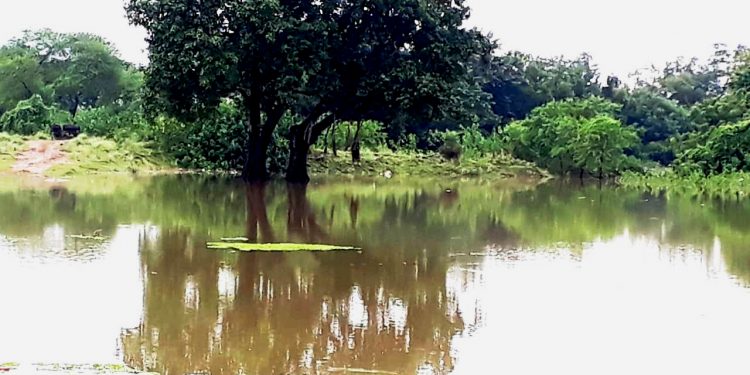Dhamnagar: Even as incessant rain continued lashing the district over past three days, the incomplete Reba river restoration project has created a flood like situation in nearby areas.
According to reports, sluice gates had been proposed under this project that aimed to irrigate farmlands in Dhamnagar block. However, breach mouths created for the sluice gates have been left open for past five years, allowing massive rain water to flow into residential areas of the block.
Unregulated rain water has devastated crops and farmlands in the area, adding to the woes of farmers. Road connectivity was disrupted and civic life was jeopardised in Dhamnagar.
The Reba, the Kapali, the Genguti and the Kochila are the tributaries of the river Vaitarani. The Reba, which flows through this block, usually brings flood to the block in every rainy season.
In order to regulate the flood water as well as irrigate farmlands, Reba river restoration project was started in 2009. As a spatial measure, it was decided to dig both sides of the riverbank including riverbed, to restore natural functioning of the river system.
River dykes were built on both sides of the river from Chudakuti to Lenjara. It was also planned to build sluice gates at different points for irrigation of farmlands. In order to complete the proposed sluice gates, breach mouths had been dug for the purpose that were left open.
The Reba river restoration work was stopped halfway in 2015. As a result, Chudakuti, Kalyani, Govindapur, Asurali, Gadhiali, Kothara and Fatehpur panchayats are being worst-hit by minor rainfall.
There are over 20 such openings at different points between Asurali and Gadhiali panchayats. Local farmers and villagers have repeatedly drawn attention of the district administration, but in vain.
Local farmers have warned of an agitation if their demand is not fulfilled. Farmer leaders Dinabandhu Das, Niranjan Parida, Nirakar Das, Seshadev Mallick and Satyamurti Behera have strongly resented the apathetic attitude of the administration.
River restoration improves resilience of the river systems and provides a workable framework for multifunctional use of estuaries, rivers and streams. It is an integral part of the sustainable water management, in conformity with the water management policies.







































